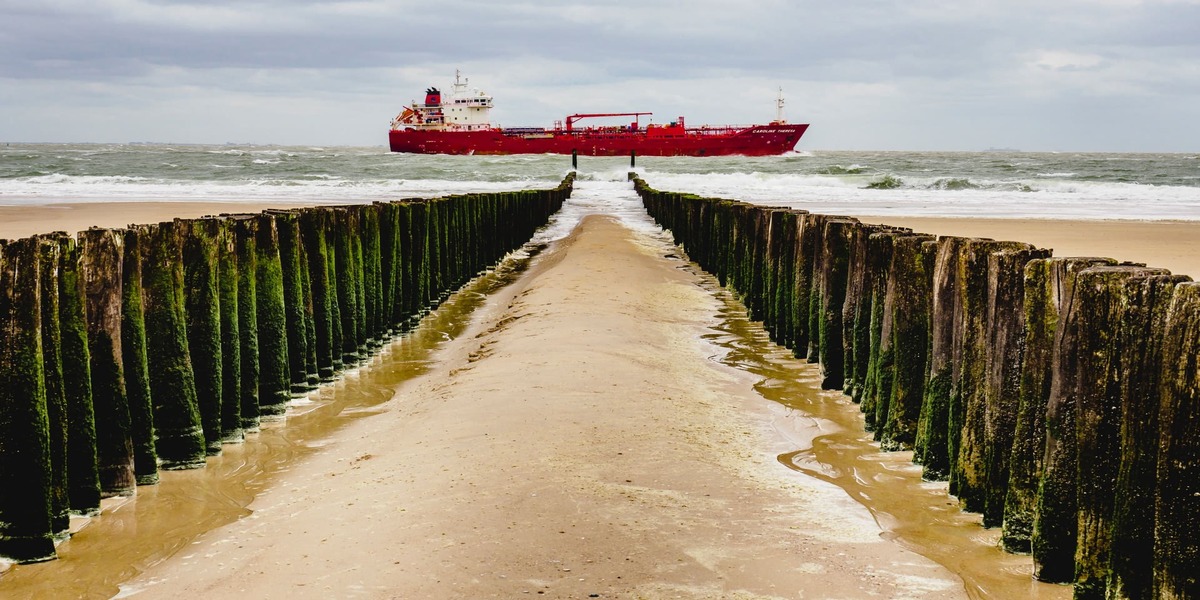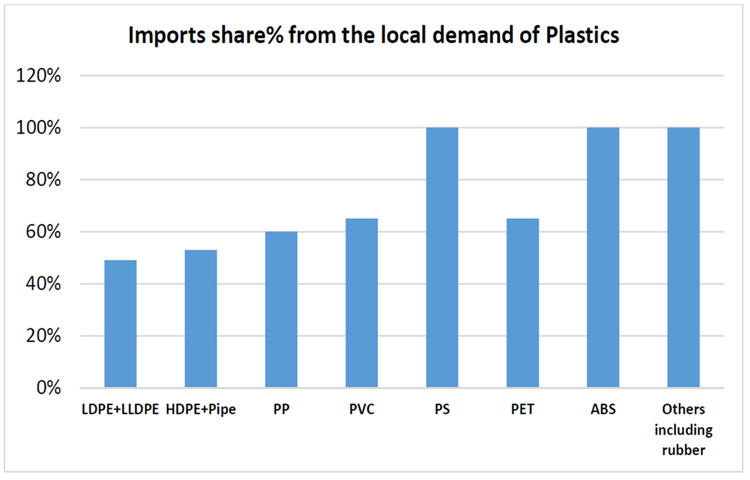Challenges For The Petrochemical Industry In Egyptian Plastics Market

Plastics are one of the most value-added products of the oil and gas downstream industry and have become essential to our lives.
Egypt Plastic Market
Plastic industries are among the essential Egyptian industries that significantly impact economic growth. The plastic industry's contribution to Egyptian GDP is assessed at 12%. Egypt is considered as the African continent's market for plastic raw materials.
With about 2.65 million tons/year of plastic consumed during 2021, representing more than 20% of the African continent plastics market size, according to the latest reports issued by the Export Council for Chemical Industries,The volume of investments in this sector is about $7.2 billion.
Plastic Consumption
Egypt’s annual consumption of plastic products and materials is $9.35billion, and the packaging industry accounts for 38% of the total consumption of plastic raw materials.
The volume of Egypt’s exports amounted to 1,656 billion dollars. Wheresas, the exports of plastic raw materials represent 31% of the sector’s exports.
The Egyptian imports of plastic material produced locally (PVC, PE, PP, PET, PS) represent about 70% of the country’s needs for raw materials. The volume of imports is about 3.2 billion dollars.
In contrast, Egyptian producers of polypropylene and polyethylene (Sidpec, Ethydco, OPC, and EPPC) are only about 30% of the needs of operating factories where Egyptian PS producers can be mentioned E-styrenics is currently sometimes offline.
Demand for Raw Materials for Plastic
The growth in plastic demand is estimated to reach about 7.4% annually, which will raise consumption to about 2.84 million tons in 2022.

There is a market gap between the volume of consumption and the current import quantities of raw materials of plastic, which is estimated to widen following the significant consumption growth rate and considering the imports share percentage from the local demand, for plastics development of infrastructure work in various types of plastic raw materials shown in the graph.
The Egyptian market is a promising market ready to absorb the planned production capacities of petrochemical projects under study and evaluation, such as Anchor benitoite, Red Sea complex, and El Alamein complex.
Current and Future Challenges for Petrochemical Industries
- The global logistics crisis significantly affected raw materials, primarily those not produced locally
- Environmental legislation and laws that prohibit the use of single-use plastic products
- The increase in the direct costs of feedstock and the increase in the cost of energy
- Exploiting experiences and competencies of workers in the petrochemicals sector
This article was contributed by our expert Ihab Yahia
Frequently Asked Questions Answered by Ihab Yahia
Q1. How much does plastic contribute to the economy?
When you search for this question, you find that Google gives you this answer: Plastic delivers many direct economic benefits and can contribute to resource efficiency. It reduces food waste by increasing shelf life, and it is relatively lightweight, reducing fuel consumption for transporting goods, that's in general.
But for the Egyptian economy, you find that Egypt produces 2.5 million metric tons of plastic raw material annually, plastics converters are more than 4000 factories distributed geographically along the river Nile banks, and plastic sectors represent 12% annually of the contribution of the Egyptian industrial sector in GDP.
Q2. What approaches are adopted by plastic producers to limit the pollution caused during the process?
When talking about GHG emissions as a pollutant from petrochemicals producers, one crucial point can be raised here among many that can be raised later: plastics are capturing carbon forming a polymer chain consisting initially of Carbon atoms beside others, it means that plastics reduce GHG emissions.
Talking about the process of converting plastic raw material to plastic finished article ready to use by the end user is considered one of the cleanest industries, where no chemical reaction occurs during the converting process.
As an example of finished articles, most of the plastics used in packaging are thermoplastics. You need to convert the solid granules of raw thermoplastics to a molten phase, then shape it into jerrycan, bottle, boxes, crates, film for bags and wrapping, tube, pipes, large containers, caps, closures, or any other form of packaging in our modern life, then cooling to solidify on its desired final shape. Moreover, any waste from the converting process of plastics can be easily recycled again.
Q3. What is the expected trajectory of the plastic sector in the years to follow?
Plastics are essential for improving our plan to reduce and conserve energy. Using plastics in vehicles and other transportation makes them lighter due to their relatively lightweight, then becomes less fuel-consuming. Plastics also reduce food waste by increasing shelf life, look again and notice how plastics improve and develop varieties in construction, furniture, and decoration.
Q4. What are some of the problems of plastic manufacture?
In Egypt, I see a significant deficit in academic-related plastics courses along all levels, from postgraduate level to school level resulting in a poor impact in developing and acquiring technologies and innovations, driving the industry to a near miss and loose opportunities for the plastics sector to play its role, plastics the most vital feeding industry for all industries.
Comments
No comments yet. Be the first to comment!
